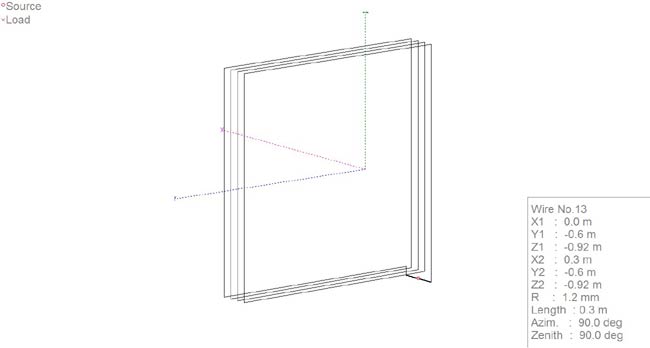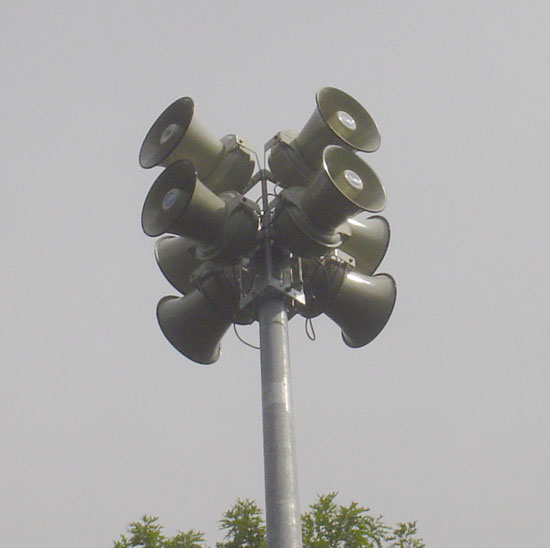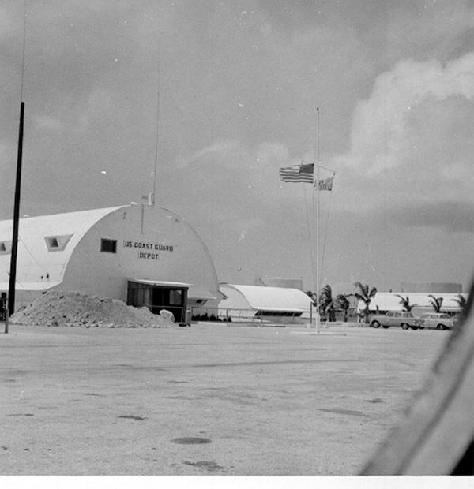Another one of those things that might work could possibly provide some service to travelers, but often falls short. Very similar to EAS, the government officials nominally in charge of the system have no idea of broadcasting. The Rhode Island TIS on I-95 had an endless loop proclaiming “This is the Rhode Island Department of Transportation Travelers Information System.” While that was welcome information, in a snowstorm, something about road conditions or perhaps the weather forecast might have been more appreciated. According to the FCC website, that was WPTJ441 on 1630 KHz with a power of 10 watts. The transmitter is located at the I-95 rest area on the Rhode Island/Connecticut state border.
The FCC is seeking comments on the current TIS in NPRM 10-203:
We solicit comment on whether to modify the existing rules governing the licensing and operation of Travelers’ Information Stations (TIS) to expand the scope of permitted operations. Since the inception of TIS in 1977, the Commission has authorized TIS operations to permit Public Safety Pool eligible entities to transmit noncommercial travel-related information to motorists on a localized basis. However, certain parties and licensees have sought to expand the scope of TIS operations in order to transmit more general alerts and public safety-related information to the public, including non-motorists. By initiating this proceeding, we grant petitions for rulemaking filed by Highway Information Systems, Inc. (HIS) and the American Associations of State Highway and Transportation Officials (AASHTO) requesting the commencement of a proceeding to amend the TIS rules. We deny the petition for declaratory ruling regarding TIS filed by the American Association of Information Radio Operators (AAIRO), but incorporate the issues raised in AAIRO’s petition into this rulemaking proceeding
The TIS as specified in the 1977 RO docket 20509 FCC 77-414 is outdated for the most part. The current rules, 47 CFR 90.242 give pretty specific requirements including things TIS stations are not allowed to retransmit, like NOAA weather forecasts. In one section of the NPRM, it is noted with the currently specified facilities, the average vehicle traveling the speed limit will transit the TIS coverage area in 90 to 120 seconds. For the above station, I found it was listenable for about 5 minutes, from the time I saw the sign next to the transmitter until it faded out, which works out to be about five and a half miles.
One alternate possibility is something like a carrier current station or a leaky coax setup buried in the median. Something like that might have more reliable coverage along the highway without blanketing the general area with a broadcast signal.
Again, in Rhode Island, drivers have the option of calling 511 on their cellphone, provided it is a hands-free cellphone. My only comment about that is when there is a major traffic jam and everyone is dialing 511 to get information, the cellular network will get congested quickly. Having a broadcast outlet for people to listen to on their car radios would be a more effective way to transmit information to the masses. As to what information a driver might want; here are a few suggestions:
- Up-to-date traffic information including alternate routing instructions in case of a major tie-up.
- Up-to-date weather information including roadway surface conditions and possible lodging locations
- Up-to-date construction project information including alternate routing instructions for both car and truck traffic
- When there are no traveling issues, other general information about rest stops, hospitals, tourist attractions, etc.
The most important thing is the information is up to date and relevant to a traveler.






TIS is a total joke in my opinion and a huge waste of taxpayer dollars and commercial medium wave spectrum. First, around here the audio quality isn’t even communications quality, and many are such cheap junky transmitters that aren’t even on frequency. It is just another local government “flag-waving” operation by some empire building liberals in order to throw away more money and make themselves feel good. And that also goes for all the illuminated road updated advisory signs erected over freeway or Interstate highway lanes. You will always do better listening to a commercial broadcast station for road reports and information than these puny “phono oscillators” broadcasting information that is hours or days old. The AM band is bad enough with the Ibiquity buzz-saws, and this further makes the AM band into a garbage wasteland. I wonder if someone is lurking in the weeds for an TIS FM counterpart????
Regarding audio quality and junky overprice transmitting equipment, I agree. One problem I have with relying on commercial radio, if you are passing through the area and do not know which stations can be counted on to break into programming and give good information, who do you listen to? Many if not most stations are running on autopilot. The four horsemen could be galloping toward you followed closely by a wall of water but the local repeater radio station will be broadcasting the latest Rihanna song or a totally bogus weather forecast. The problem is that commercial radio stations can not be depended on to be manned and able to stop the automation during an emergency, especially outside of normal working hours. A universal TIS FM station on the old channel 6 audio (87.7 MHz) frequency installed across country might actually make more sense than the AM TIS stations.
The traveling public not familiar with local stations is at a disadvantage, I agree. However, traversing the AM band while en route to the NAB last year, there are certain signs of who is doing the “bird”, or who really has some people manning the station interested in informing the public. The usual 50 kW stations seemed to be better in this regard, except for a few surprises. The surprises were Class D (formerly Class IV) stations operating on 1230, 1240, 1340, 1400, 1450, and 1490 kHz. It seemed that there were a few of these guys who actually did live broadcasts and had someone interested in giving live news reports. So, at the extremes, the big boys, and the little boys seemed to do better at weather and road reports than the bunch in the middle. That was my take over the 1700 mile journey last year.
After thinking about my comments on this post, I decided to check the FCC records for Commercial AM stations licensed and operating on 1610 kHz.. No surprise here as there are None! The TIS was always a “secondary” service meaning that they could be bumped if the need arose. When the expanded AM band became law, I expected to hear new stations on 1610, but not so. “Secondary status” has become primary status for all practical purposes for these phono oscillators. This policy is similar to the stations that have been allowed to continue operations on their legacy frequency assignment after the 5 year period elapsed on their new 10 kW expanded band authorizations. I think its time to free up the band by getting rid of these wasteful peanut whistles so that 1610 can be used by serious broadcasters. That goes for 530 kHz. also.
The entire expanded band turned into a fiasco. The idea to move station out of there old allotment into the new expanded band wasn’t bad, just that none of those stations that receive expanded band licenses ever moved, so AM stations got a free license. There is one in NJ (WWRU) that comes in pretty good around here day and night. As far a 530 goes, I believe the FCC was concerned about interference on 500 KHZ maritime distress and calling frequency. Now that that has gone away, 530 could become a full power allotment provided no one interferes with NAVTEX on 518 KHZ.
John, you are right about a number of class D and C stations that are bucking the trend and doing live programming. These are mostly owned independently by people who have been in radio all their lives and know how to do it right. There are at least 4-5 of them around here that I can think of.
I still think moving the TIS stuff off of the AM band onto the old channel 6 audio frequency and making that the universal TIS frequency across the country might be a good way to go provided the stations actually serve the public. There has always been a disconnect between what government officials perceive broadcasting to be and what radio listeners want to hear.
There are instances that a miniscule number of TIS stations do operate their licenses judiciously. A couple of airports use it to direct travelers to the right entry gates to streamline traffic. This could be done on 87.9 MHz. and this spectrum is probably better for low power operations than the much noisier AM band. I do think that if it happens to go the 87.9 MHz. FM route, that there are good technical requirements except for transmitter power, put forth to make these stations operate under the same strict rules for emissions as the others operating in the 88-108 MHz. band are required to do. If this was done in conjunction with a TV Channel 6 band expansion for FM, it would gain attention and give new entrants a chance to be heard.
If the FCC would take the funds from the sale of the higher frequency spectrum and buy at least 3 AM channels US wide, then one band for US National coverage with multiple TX sites, one band for Regional coverage with multiple TX sites & one band for Local Spot coverage. GPS lock all of these stations and operate each of these channels as a single frequency network. For a airport like DFW that has a large land area, there could be multiple same band transmitters operating as a single frequency network. (Frequency & program Lock). The National & Regionals may have different programs at any point in time,so the option of program locking would not be feasible.
When driving, state to state, one could tune in to the Nationals or Regionals channels where an announcment would inform the travelers of the local channel band.
I am not so sure I would want the FCC or government to “buy” any stations. The federal government has become so bloated, it has been called a “Beast” by some, feeding on its taxpayers. Back in the 1980’s, three nationwide one-way paging channels were allocated at the high end of 931 MHz.. Three large carriers operated their networks, but the service never was truly “nationwide”. As usual, the major metropolitan areas were covered and in one case 6400 BAUD was used. This resulted in reduced paging coverage making the service less than what users bargained for. If there is a demand for nationwide TIS, which I don’t believe there is, it should be operated privately. Get the government out of the broadcasting business! NOAA’s hodge-podge network at 162 MHz. in many cases is a waste of watts. Private operators would be better to take the reins of this wild government horse, and any future spectrum allocations.
We have the NOAA weather broadcasts, and that is enough, it serves its purpose, I do use those and get good weather reports without having to listen to an hour of political propaganda on a local talk station. But the AM and FM stations that are operated for Traffic Information are just not necessary, and most of the time, worthless. Private ones like those used for visitors at airports are more useful. But the ones on freeways are rarely updated. If we did improve them, we would have to hire a person to constantly update these recordings. I just say, scrap that and keep the airport ones, which are usually privately owned. A majority of people use a cell phone or tune into the local radio stations for traffic reports.
I would like to use 87.7 or 87.9 for broadcasting, don’t clutter that with these traffic transmitters. Really, we don’t need government wasting time on this. We have plenty of private sources of traffic.